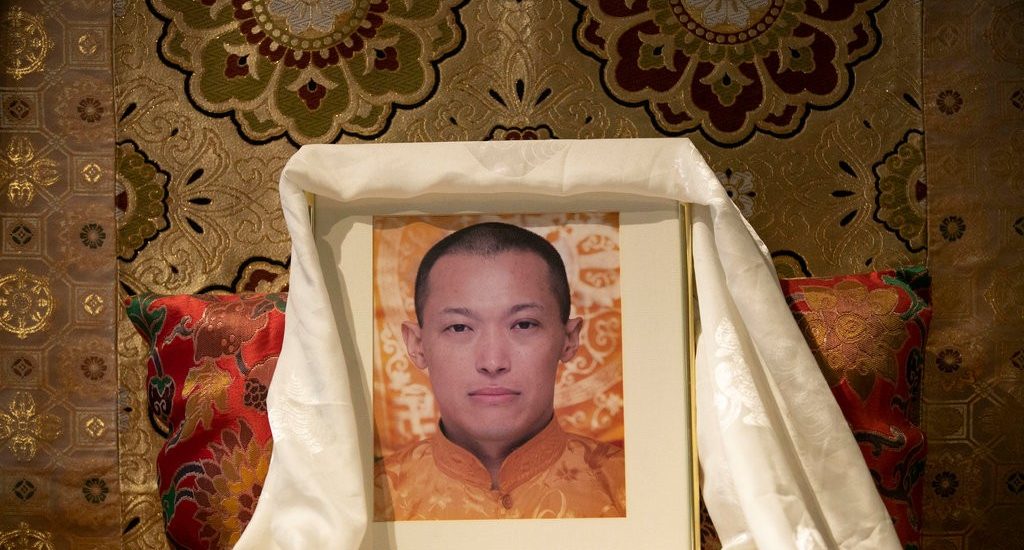KJIPUKTUK (Halifax) – There is a sense of surprise in the official responses to the allegations of rape and sexual abuse perpetrated by Sakyong Mipham, the Halifax-based leader of Shambhala International.
From what I witnessed while involved in the Shambhala Training program in the mid-eighties, I believe that surprise is both feigned and unwarranted.
The kinds of activities Mipham engaged in aren’t aberrations, it’s business as usual in the kingdom of Shambhala. It’s happened before, it may well happen again.
I enrolled in my first Shambhala Training meditation weekend in the early eighties, when the mostly American Buddhists were just getting established here in Halifax. There was no centre yet, it was held in somebody’s house. We meditated, we learned about basic goodness, vulnerability, and having an open heart.
I never became a member, but I fellow-traveled for several years. I also helped out, coordinating meditation weekends, making posters and maintaining the mailing list. I made friends, I met a lot of great people.
I also saw things that weren’t nice at all.
There was a lot of drinking in that community. Too much. The founder of Shambhala Training, Chogyam Trungpa, was an alcoholic. He slept with many of his students. Lots of people knew that, nobody questioned the power dynamics at play. Those attitudes became part of the culture.
Osel Tendzin, a westerner who succeeded Trungpa, was worse. While knowing that he was HIV-positive he lied about it and did not use protection when having sex. He transmitted the disease to one of his students, who died of AIDS as a result. He arrogantly believed he was invulnerable.
Again, lots of people, and not just those in leadership positions, knew of this behaviour, but chose to remain silent.
I remember that there was a lot of upheaval when the news broke. Some people left, others resigned from their leadership roles. But the commotion was relatively short-lived, and soon it was business as usual. It was all Tendzin’s fault, a bad apple. Then people forget.
And now Mipham. Again, there are indications that the leadership and many others within the church knew about the alleged rapes, the groping, the misogyny. And how could they not? Much happened openly, at drunken parties, with Mipham the obvious centre of everybody’s attention. That Mipham assumed he could get away with this behaviour is telling in itself.
If anything has changed it is that Shambhala has further commodified since the pre-Internet days I was around. PR and marketing have intensified, and so has the hypocrisy. After all, there is money to be made.
Mipham, “Author, Spiritual leader, Marathon runner, Father” announces his website. “The Sakyong uses the basic principles of the Shambhala tradition–meditation and a sincere belief in the inherent wisdom, compassion, and courage of all beings–to help readers to listen and speak more mindfully with loved ones, co-workers, strangers, and even ourselves,” states the announcement of a new book by Mipham on “The art of conversation.”
Stay tuned for part 2, The art of misogyny.
Three consecutive leaders, all engaging in questionable behaviour and a leadership around them that remains silent. That’s too much to be shrugged off as a mere coincidence.
Trungpa, then Tendzin, now Mipham, were at the top of a pyramid. They are gurus, people you bow to, people who need to be served and their every wish fulfilled. They are not to be doubted. Oh, and then there is reincarnation, for added authority.
I don’t think that attitude fundamentally changed since I left. It is what’s at the root of what has plagued the Halifax-based organization for some 40 years now.
And it can’t be fixed, not really, not with obedience to a guru being such an intrinsic component of Tibetan Buddhism.
It’s remarkable how regular members of this church continue to tolerate a hierarchical system that allows these terrible things to occur time and time again.
People in Halifax would do well to steer away from Shambhala.
If you can, please support the Nova Scotia Advocate so that it can continue to cover issues such as poverty, racism, exclusion, workers’ rights and the environment in Nova Scotia. A paywall is not an option, since it would exclude many readers who don’t have any disposable income at all. We rely entirely on one-time donations and a tiny but mighty group of dedicated monthly sustainers.





Shambhala has changed my life hugely for the better. There have been rotten aspects in the organization, in the leadership, in the power structures, blindness and arrogance and malfeasance that no one can defend. And simultaneously it has been my personal experience as a member over 35 years to encounter countless kind, compassionate people, many wise and gentle teachers among the older students, and a philosophy and practice that have enriched my life, my understanding, and my relationships profoundly. I don’t understand how this contrast can be, I am brokenhearted and confused, but I know that it is wrong to paint all of Shambhala with the same dirty brush. That’s just far too narrow a view, another kind of blindness and arrogance that can not help with what’s necessary now, the hard work of healing, reconciliation and change.
II suppose it’s good to know that some, like Crane Stookey (comment above) have benefited by the Sakyong’s filthy behaviour. I knew almost nothing about this until the cat started to come out of the bag (did I make this up? Or is it a real exprression?). For myself, I never connected with the Sakyong except very briefly at social gatherings. I didn’t find anything to connect with. It could have been worse. at least he didn’t have a kusung drag me into a bathroom so the SMR could molest (or even rape) me. We are all better off without him. Hard times are ahead because we no longer have a leader, but it’s better to have no teacher than a leader as corrupt as SMR.
I just felt drunk with pride (that I know better).
Awake again.